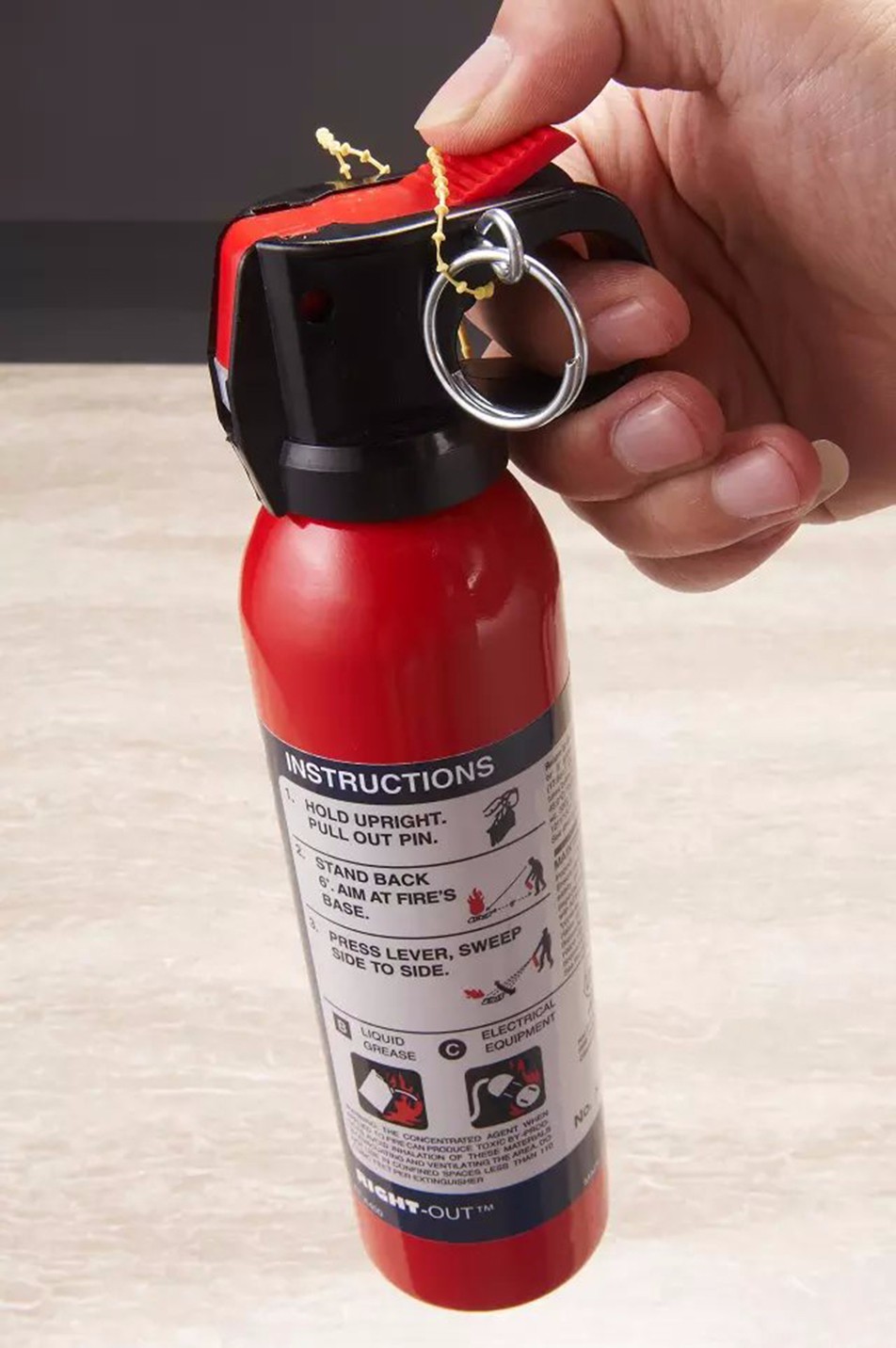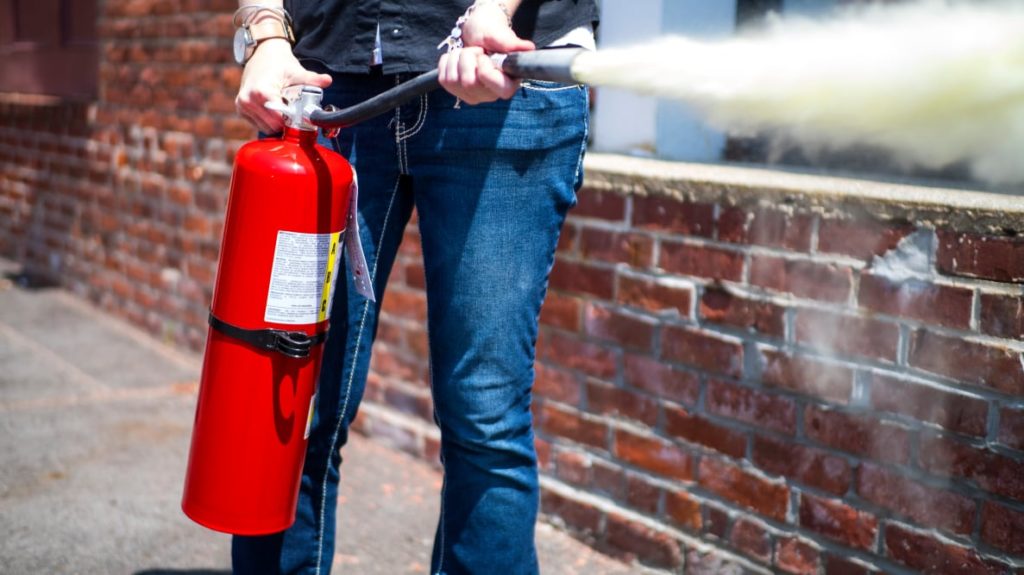

Halon fire extinguisher portable#
Throw distance: 3.50 m/11.5 ft +20☌/+68☏ New installations of fixed fire extinguishing systems and portable fire extinguishers using Halon were prohibited from on board all ships and floating.Order a manufacturer's certification with your fire extinguisher for a small additional charge. The fire extinguisher is filled with industry-standard Halon 1211.
Halon fire extinguisher install#
The compact design of the fire extinguisher makes it easy to install in the cockpit or cabin and allows for one-hand operation. The fire extinguisher can be used in the presence of electrical tensions up to 1,000 volts. The handheld fire extinguisher is designed to fight small flames caused by flammable solids, liquids, gases and electrical fires. Top quality, US Made Safecraft Halon extinguisher is simple to mount, with its flat mounting bracket with four holes. This gives the agent a range of 9 to 15 feet and offers significant advantages in fighting fires in large aircraft cabins.Practice fire safety in the skies with the AIR TOTAL 74-00 Halon 1 Portable Fire Extinguisher from SkyGeek. Halon is a liquefied gas which, when discharged, leaves the nozzle in a stream that is about 85% liquid and 15% gas. Halon Fire Suppression Systems For many years, Halon 1301 was the holy grail of Halon Fire Suppression Systems for high-value assets that would be damaged by traditional sprinkler systems. Mandatory change per Commission Regulation (EU) No 744/2010 the use of halon is. It is seen as the most ideal fire extinguisher but for many locations. However, foams are inferior to Halon in that they do require cleanup and in that they are not for use on electrical fires. Halons are fire extinguishing agents which are gaseous when discharged in the aircraft environment. Offering the smallest & lightest Halon-Free 5B:C Cabin Fire Extinguisher. Halon is a type of clean agent and is different than the average fire extinguisher. The details are in EC Regulation 3093/94 and EC 2037/2000 and the UK Hazardous Waste regulations 2005. Dry chemical extinguishers should not be used in an aviation environment.įoam extinguishers are effective on class A and B fires, and are particularly useful for preventing ignition of flammable liquid spills. The ban on Halon fire extinguishers was implemented following the Montreal Protocol of 1987 and subsequent extension at Kyoto a decade later. However, they are highly corrosive, and create billowing clouds of choking dust. Also, unlike CO2, there is no danger of "cold shock to avionics or other sensitive electrical equipment.ĭry chemical fire extinguishers are effective on A, B and C class fires. Even for the toughest fires, less than an 8% concentration of Halon by volume is required, leaving plenty of air to use in the evacuation process. Unlike CO2, however, Halon does not displace the air from the area where it is dispensed.

Halon is similar to CO2 in that it is suitable for use in cold weather and leaves no residue.

Halon is effective on common combustibles (although not as effective as water), but Halon is also effective on class B (flammable liquids), and it does not conduct electricity back to the extinguisher operator (class C). Water is very effective on class A fires (common combustibles like wood and paper). It actually interrupts the chain reaction of fire. It offers some of water's cooling effect and some of carbon dioxide's smothering action, but its essential extinguishing technique lies in its capacity to chemically react with the fire's components. Halon differs in the way it puts out the fire. The most common extinguishing agents like water, carbon dioxide, dry chemical and foams attack the fire physically to deprive the fire of one or more of these three three elements. The First Alert GARAGE10 FE10GO Fire Extinguisher is UL rated 10-B: C and designed for garage and workshop use, fighting flammable-liquid and electrical fires.


 0 kommentar(er)
0 kommentar(er)
